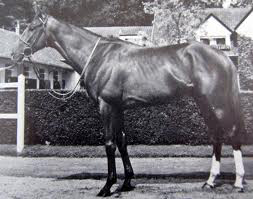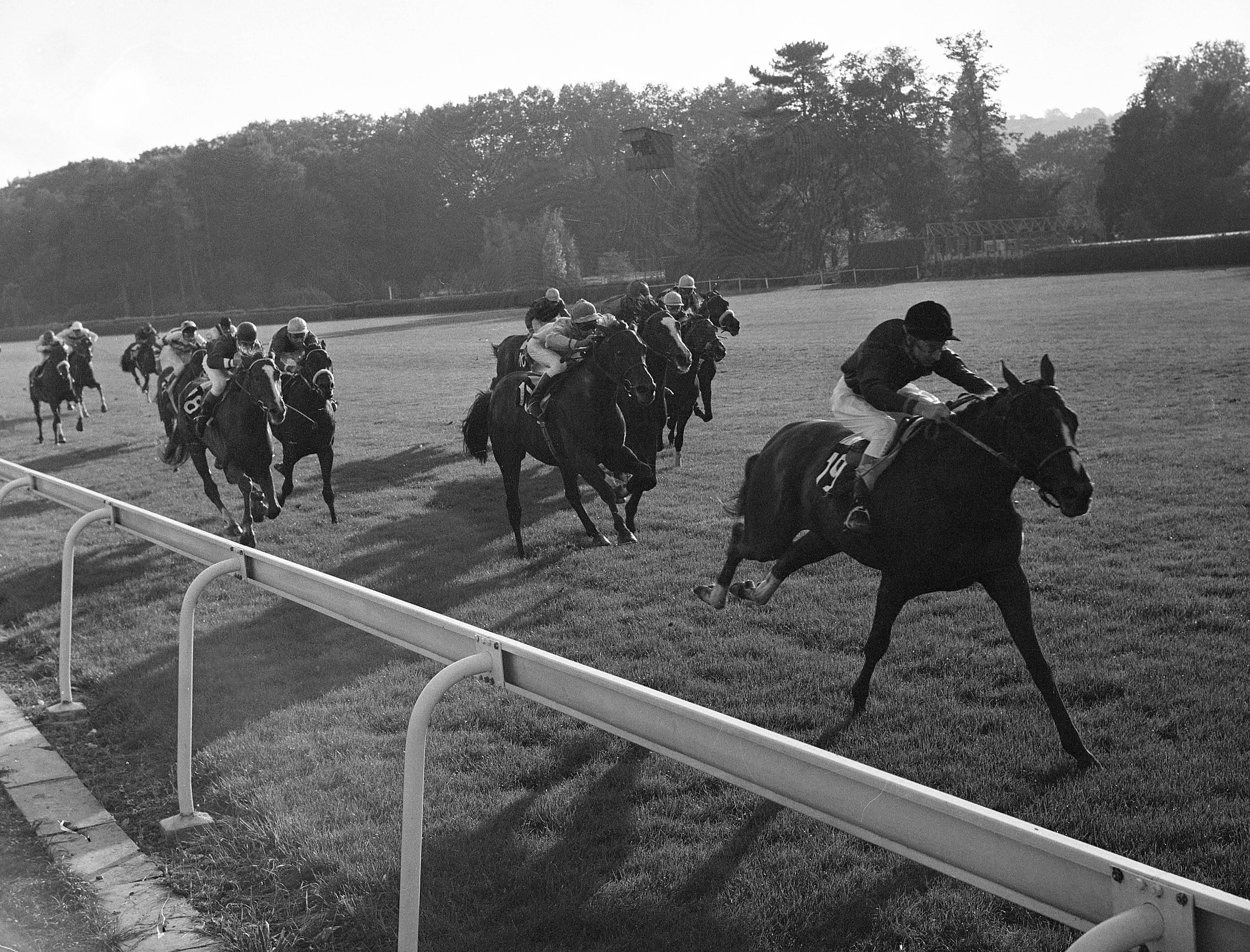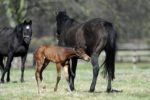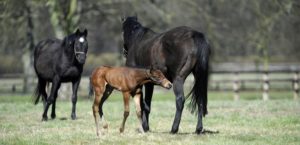Until the magnificent Frankel took the racing scene by storm, anyone could have been forgiven for wondering whether the days of truly exceptional racehorses were a thing of the past. In achieving his eye-watering ratings of 143 in 2011 and 147 in 2012, Frankel had become only the seventh horse in Timeform’s extensive history to earn a rating of over 140. His emergence ended a void of 46 years, as the previous six superstars – Tudor Minstrel, Abernant, Ribot, Mill Reef, Brigadier Gerard and Sea Bird II – had all been born either in the 1940s, ’50s or ’60s.
Coincidentally, 2022 marked landmark anniversaries for two of these luminaries. February 27 marked 70 years since the birth of Ribot, the unlikely Italian hero who triumphed in all 16 of his races, including the 1956 King George by five lengths, and the 1955 and ’56 editions of the Arc, the latter by six lengths. And March 8 marked 60 years since Sea Bird II was foaled in France, for breeder Jean Ternynck.
Unlike Frankel and Ribot, Sea Bird didn’t retire unbeaten but some would argue that he should have done. The story goes that he was somewhat unlucky when meeting his sole defeat, in the Grand Criterium, when he failed to catch his more experienced stablemate Grey Dawn, already a clear-cut winner of the Prix Morny and Prix de la Salamandre.
But let’s not concentrate on the one setback in an otherwise glorious career. All three of Sea Bird’s strong-finishing efforts as a juvenile suggested that he would be much more effective over middle distances and his pedigree supported this theory. Although his sire, the American-bred Dan Cupid, had shaped like a sprinter at two, he showed a very different facet to his talents in the Prix du Jockey-Club over 1m4f, keeping on so bravely that the highly talented Herbager won by only a short head. Sea Bird’s broodmare sire, Sicambre, had stayed even better, winning the Prix du Jockey-Club as well as the 15-furlong Grand Prix de Paris.
Sea Bird never came close to defeat in his five starts
Never asked to tackle less than 2,100 metres as a three-year-old, Sea Bird never came close to defeat in his five starts. He gave a hint at what was to come when he romped home six lengths clear of Diatome (future winner of the Washington D.C. International) in the Prix Lupin. This effort resulted in his starting a clear favourite to win a 22-runner edition of the Derby and his supporters never had cause to worry. Always travelling extremely easily, he swept past the leaders in a matter of strides and would have won by substantially more than the official two-length margin had he not been eased.
He was just as impressive in the Arc, even though his 19 opponents included Reliance, Diatome and Carvin, the first three from a hot edition of the Prix du Jockey-Club, Meadow Court, who had followed up his Derby second with victories in the Irish Derby and the King George, and the top American colt Tom Rolfe, a Ribot colt who numbered the Preakness Stakes among his nine victories from 12 three-year-old starts in his native land. There were also several accomplished four-year-olds, including winners of the Prix Ganay and Coronation Cup. Even though Sea Bird veered markedly to his left in the closing stages, he still had six lengths to spare over Reliance, the previously unbeaten winner of the Jockey-Club, who in turn had five lengths to spare over third-placed Diatome.
So Ribot and Sea Bird had plenty in common during their racing careers and their stallion careers also ran along parallel lines, up to a point. Ribot spent his first two seasons at Lord Derby’s Woodland Stud in Newmarket, followed by two more in Italy, but he was virtually unproven when his owners accepted an offer to lease him for five years to John W. Galbreath of Darby Dan Farm in Kentucky. Even though he was believed to be paying $300,000 a year to lease Ribot, Galbreath soon had evidence that the money was being very well spent. His first crop produced Molvedo, who followed in his sire’s footsteps by easily winning the Arc in 1961. Then Ribot’s second crop was led by the top miler Romulus, with the third doing even better, thanks to Ragusa. In winning the Irish Derby, Eclipse, King George and St Leger, Ragusa played a leading role in securing Ribot the 1963 sires’ championship. The last of Ribot’s four European crops also struck gold, with Prince Royal becoming his second winner of the Arc.
Ribot was to earn two more sires’ championships, with Ribocco being largely responsible for the second title in 1967, thanks to his victories in the Irish Derby and St Leger and a second in the Derby. Ribot repeated the magic the following year, this time with Ribero, another winner of the Irish Derby and St Leger. There were also Classic victories for Long Look (1965 Oaks), Boucher (1972 St Leger) and Regal Exception (1972 Irish Oaks).
By the time Ribot gained his second and third championships, he could theoretically have been repatriated to Europe. However, he was proving similarly successful in the US, thanks to such as Tom Rolfe (champion three-year-old colt of 1965) and the exciting Graustark (the Landmark anniversaries serve to celebrate two turf greats second highest-rated juvenile of 1965). Ribot was later to be represented by Arts And Letters, 1969’s Horse of the Year, so it was understandable that Galbreath and Darby Dan were tremendously keen to retain him. And retain him they did, with the lease being renewed in 1965. The reason given was that Ribot had become so temperamental that it was feared he might injure himself on the journey back to Europe. Judging by the colourful stories about the stallion’s extraordinary quirks, the danger was real, not fabricated.
A five-year deal was arranged with a syndicate of American breeders for Sea Bird to join Ribot
But that wasn’t the only lease entered into by Darby Dan in 1965. A five-year deal was arranged with a syndicate of American breeders for Sea Bird to join Ribot, reportedly at a cost of £95,000 per year. Timeform commented that “it is a great pity that he was not allowed to remain in training for another season, and an even greater pity that he was allowed to fall into American hands. After five years his first crop will have raced as three-year-olds, and the Americans will have had ample opportunity of deciding whether to honour the terms of the lease, or to discover that he is ‘too temperamental’ to be returned home. One fears that we have seen the last of him.”

The mighty Sea-Bird
The fact that Sea Bird died in his native France suggests that, unlike Ribot, his abilities as a sire did not match exceptional talent as a racehorse. This strikes me as harsh, as it is expecting a great deal for a phenomenal racehorse to develop into an equally phenomenal stallion. Even Frankel had to convince the doubters after the initial flush of enthusiasm had worn off.
These superstars from different generations illustrate perfectly how much the breeding industry has changed over the decades. Frankel is currently credited with 920 foals of racing age, all conceived by the time he was 11. Ribot, on the other hand, is credited with siring a total of 428 foals during a career which saw him sire the last of his stakes winners at the age of 20 (he is variously credited with siring 64, 65 and 67 stakes winners. Whichever it is, it still amounts to a prodigious figure of around 15 per cent).
Sea Bird had a much shorter innings, succumbing to colitis shortly after passing his actual 11th birthday. He left only 175 foals, of which more than 30 – equivalent to more than 18 per cent – became stakes winners. That is not the record of a failure, or anything like one.
In retiring ten years later than Ribot, Sea Bird found himself in an American industry which was already becoming obsessed with speed and precocity, at the expense of stamina. This was hardly ideal for a horse who reserved his best efforts for 2,100 and 2,400 metres.
American breeders would have loved the fact that he was a grandson of Native Dancer
Sea Bird must also have had to overcome some questions about his pedigree. Admittedly American breeders would have loved the fact that he was a grandson of Native Dancer, a two-time Horse of the Year whose only defeat in 22 starts was his second in the 1953 Kentucky Derby. But his sire Dan Cupid hadn’t won a major race and he was to sire only a handful of Group 1 performers. Then there was the extraordinary statistic that none of Sea Bird’s first five dams was a winner under rules on the Flat.
Sea Bird’s dam Sicalade showed some talent, finishing second of 26 on her second of her two starts. One sensationalist aspect of Sicalade’s story is that she reportedly ended up being sold for £100 as butcher’s meat, after she had been suffering increasing circulatory problems with each foaling. To put a more positive slant on Sea Bird’s pedigree, both his grandsires had been outstanding performers and his second dam was a sister to Camaree, who had landed the 1950 1,000 Guineas for Monsieur Ternynck.
It didn’t take long for Sea Bird to draw attention to himself as a stallion. His first crop, born in 1967, featured the strapping Gyr, who beat all bar Nijinsky in the Derby. Gyr inherited his sire’s impressively long stride and used it to win the Grand Prix de Saint-Cloud. Another colt from this first crop was Great Heron, a short-head second in the Irish 2,000 Guineas.
There wasn’t a great deal to shout about in Sea Bird’s second crop, and none of the three Group/Graded winners in his third crop managed to score at the top level, racing in 1972. It is easy, then, to understand why Sea Bird the stallion was deemed to be falling short of the standards set by Sea Bird the racehorse.
Cruelly, it was Sea Bird’s fourth and fifth crops, born in 1970 and 1971, which would really have put him on the map, but his death in early-1973 meant that he wasn’t able to capitalise on his success with the likes of Allez France, Sea Pigeon and Little Current. Their glory days largely came after his death, though Allez France did win the 1972 Criterium des Pouliches in spectacular style. Allez France shone at up to 1m4f notably winning the 1974 Arc, and Little Current also stayed well, taking the title of champion 3-year-old colt in 1974, when he landed the second and third legs of the Triple Crown. Needless to say, the much-loved Sea Pigeon also appreciated a test of stamina, winning the Ebor and two editions of the Chester Cup. Incidentally, Little Current was one of seven Group/Graded winners (and a total of ten black-type winners) in Sea Bird’s fifth crop. Don’t forget that his seven full crops contained little more than 170 foals, an average of around 25 foals per crop.

Sea-Bird powers away to win the 1965 Prix de l’Arc de Triomphe
So who wouldn’t have wanted to breed to him when he returned to France, where the structure of racing was likely to play to his strengths? The chances are that Sea Bird would have added more outstanding performers to his tally, had he lived.
Fortunately, his last full crop included Arctic Tern. This winner of the 1977 Prix Ganay shared with Northern Dancer and Halo the distinction of having a daughter of Almahmoud as his dam, and he too developed into a champion sire. Thanks to the Prix de Diane winners Harbour and Escaline and the 1986 Prix du Jockey- Club winner Bering, Arctic Tern sired a Classic winner in three of his first five crops. Unfortunately, his early success also led to American interest and he joined the exodus from France in late-summer 1983. Another son, Glacial Storm, was second in the 1988 Derby but Arctic Tern’s American sojourn was to prove less productive than his years in France.
Bering, of course, was given the chance to keep the Sea Bird line to the fore, but he too started his stallion career in the US before being returned to France. He enjoyed Classic success, with Pennekamp, Matiara and American Post respectively winning the 2,000 Guineas, the Poule d’Essai des Pouliches and the Poule d’Essai des Poulains.
This meant that Sea Bird, his son Arctic Tern and grandson Bering were all Classic sires, and great-grandson American Post would have also achieved that distinction had Liliside not been disqualified after the 2010 Poule d’Essai des Pouliches. Sadly though, all good things come to an end and that appears to be the case with the Sea Bird male line, in much the same way that the male line descending from Ribot has gradually faded away during the era of the all-conquering Northern Dancer line.



